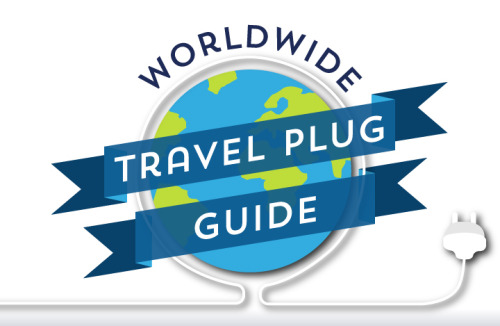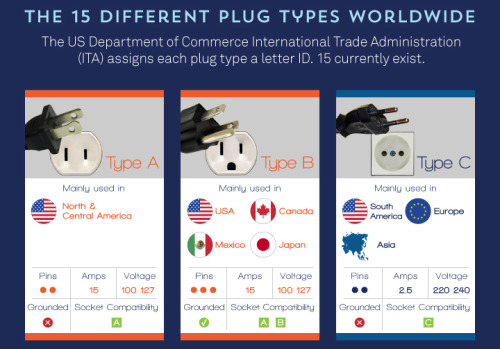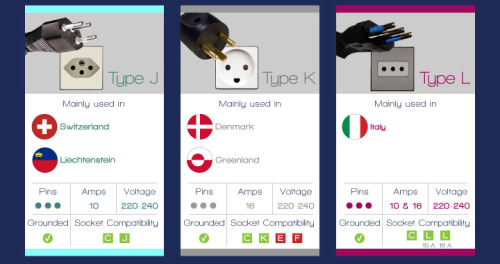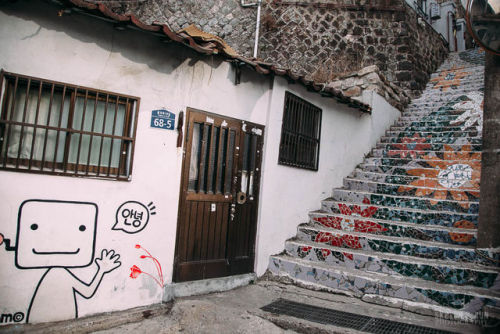#travel guide
Scaliger Castle is situated in the lakeside area of Sirmione. In the Lombardy area of the Province of Brescia, Sirmione is a villa and community. Sirmione is located on a little peninsula in the southern part of Lake Garda, a lovely historic site. Scaliger Castle, including a very unusually fortified port, is one of the best examples of Medieval fortifications.
In the first half of the 13th century Sirmione entered the possession of the Scaliger tribe. The castle is thought to have been founded by Mastino I della Scala. The city remained a major military center until the 16th century. Until the 19th century, a garrison existed in the building. Sirmione was part of the Kingdom of Venice from 1405 until 1797 when it was acquired by Austria. Later in 1888, Sirmione joined Unified Italy.
The sinking castle Rocca Scaligera di Sirmione was built in the 13th century and used by the Scaliger family as a port fortress. The castle overlooks the town and has a large fosil, in which ducks and swans can now be seen. The tower is visible to the public. The walls are followed by 150 steps.
Once established as Garda, Sirmione was the prestigious summer resort Verona during the first century BC. The town grew into one of the most important Roman towns in northeastern Italy and Garda had been praised by several artists and poets of that time, among whom Catullus.
The city was an important fortress, which was built during the 4th and 5th centuries A.D to defend the southern part of the sea. Even after the conquest of the Lombards, the territory was settled and the king was directly responsible. The town church and convent had been built by Ansa, King Desiderius’ aunt.

belvedere palace • the best palaces in and around vienna (visit european castles)
Studying Abroad
- You’re
probablydefinitely going to over-pack the first time you leave for a semester. A good rule of thumb for cutting down your luggage is to pack for just two weeks. You’ll usually end up with enough clothes for three, and at that point you’ll hopefully be doing laundry. - Leave behind anything you’ll only wear a few times. Just because you like it doesn’t mean you’ll wear it more overseas than you do in your everyday life stateside.
- Your goal is to leave room in your one suitcase to bring back the miscellaneous bullshit you’ll accumulate.
- Bring two pairs of shoes: dress shoes for special occasions and nights out, and everyday shoes, which are going to get beat to hell. I’d recommend leather boots, which generally look stylish enough to wear in a city, but can easily be waterproofed and are fairly comfortable to walk in. If they aren’t, buy inserts. This is so important. Other shoes are at your discretion, but these two are not negotiable.
Shorter Trips
- When it comes down to it, all you need to pack for a short trip are underwear and socks, your passport and wallet, your toothbrush, and your phone. Maybe a rain coat. Anything else, you can live without for a weekend or so. But if you’re missing any of these it’s not going to be a fun time. Trust me on this one.
- Don’t bring your laptop anywhere, unless you’re settling in for daily life at the destination. For short trips, they’re useless: heavy, easily breakable, large, and easy targets for thieves. If you have a smartphone, use that instead. Even if you’re on airplane mode the entire time you’re in Europe, free Wi-Fi is easy to find.
In General
- Buy a little padlock. You can get sets of two in Walmart for about five dollars, each lock a bit larger than a thumbnail. Keep them with you in your purse or coat. You can use them to lock your backpack in a crowd, or your checked bag on a flight, or your purse, or your hostel locker.
- If you use purses or messenger bags, bring a bag with a strap long enough to wear across your chest rather than over one shoulder. Make sure the strap is too thick to be easily cut or snapped by someone sprinting past you. Your bag should be sealed with a zipper, not a flap: nothing a thief could slip their hand into while you were distracted. If there are vulnerable external pockets, only keep things in them that no one will want to steal, like pennies, pens, and tampons.
- Unless you’re going to Northern Europe in winter you don’t need to bring a very heavy coat. It will become dead weight as soon as the weather changes. In most of Europe, a pea coat and scarf over a few layers will keep you warm and remain useful for longer. Check average monthly temperatures for the region if you’re unsure. You should also bring a raincoat, ideally one that folds up very small.
If you’re planning a trip through Europe, I’d really recommend you look at rail passes! Especially if you’re planning a longer trip through connected countries, this can be a great way to get around. It removes all the hassle of catching flights, allows for a lot of spontaneity, and depending on where you’re going, it can also be the cheapest option.
About two years ago I spent a month going from Istanbul to Lisbon with an Interrail Global Pass, and while the trip was by no means without flaws (some notable moments include stranding myself on the continent of Asia and that night I spent homeless in France) the pass itself was fantastic. Here’s a rough overview, and if it sounds like it’s in your wheelhouse you should poke around their site!
- Interrail is the less expensive option, and it’s only available if you’ve been in Europe for more than six months. In other words, if you’re spending a year abroad you can get a cheap rail pass just in time for your spring break. The only caveat is that it won’t work in the country you’ve been living in.
- Eurail is for everyone else. It’s a bit more expensive, but depending on how far you’re going and in which countries, still worth it.
- Interrail/Eurail passes are really flexible: if you’re taking a commuter train, you show up at the train station, log on the pass which train you’re boarding, and then board it. That’s it. That’s the whole thing. It’s about five hundred times less time-consuming and stressful than planes. For more exclusive trains (overnight, express, etc.) you might need reservations, but these are cheap, and easy to get either at the station or online.
- A lot of ferries and buses are also free or discounted with the pass.
- There’s three parts to the process of choosing a pass: first you decide a region. Your options are one country, two to four connected countries, or all thirty-plus in the European Union.
- Secondly, you decide on a time period: one week through three months.
- Thirdly, decide if you want an unlimited pass, which means you can take trains any day within the time period of the pass, or a pass with a specific number of travel days. For example, four travel days in two weeks.
- Order the ticket at least a month beforehand; it can take a little while to arrive in the mail.
- On the pass, there are slots to fill in the train number, time, destination, and origin. Fill it out before boarding a train.
- There is a free app that works offline, and it’s amazing. If you plug in your starting point and your destination, it will show you every train or combination of trains that can get you there, along with duration, times, and whether or not it needs a reservation fee.
- The map they mail with your ticket shows every train route in Europe, as well as the buses and ferries included or discounted with the pass. Everything is color-coded to show commuter trains, scenic routes, express routes, and overnight routes. On the flip side it details all the discounts for non-train transportation.
- Some trains require a reservation fee, even if you don’t have to buy an actual ticket. It’s common for more exclusive trains, such as overnight trains and high speed trains. Spain is the only country I know for a fact requires a reservation for commuter trains (if I remember correctly, the fee is €10). If you’re unsure, look it up.
AirBnB: stay in someone’s home, for money.
- Airbnb lets you filter results by public room (e.g. living room), private room, and private apartment.
- Because they’re people’s homes, AirBnB rentals are all over the map rather than being specifically centrally located.
- Renting a whole apartment can be the cheapest, best option if you’re with a group of people! You can split the cost and have a whole apartment to yourselves. On your own, it’s not nearly as affordable.
- Read the reviews, if there are any.
- AirBnBcan be cheap, but it tends to be on the pricier side, especially if you’re traveling alone. On the flip side, the accommodation you’ll find on here is much homier than most hostels, often more private, and feels more secure.
- Like couchsurfing, this usually offers more privacy and solitude, but less of a chance to meet other backpackers.
- Because it’s a financial transaction, there’s no obligation for you and the host to socialize, although obviously still be polite, and always leave a review after your stay.
- It’s exactly the same as couchsurfing, except you pay money for it and you’re less likely to hang out with the host.
Couchsurfing: stay in someone’s home, for free.
- The most common concern I hear about couchsurfing is a legitimate one. You’re staying with a total stranger; how can you trust them? And at the end of the day it is a leap of faith. But if you read the reviews and the personal profile of the host, you can get a much better idea of what you’re going into. Remember that they’re giving a total stranger the keys to their house. At its core, couchsurfing is about faith in other people: that they’re basically good, and interesting, and worth knowing and helping.
- Not going to lie; it’s much harder to find a host as a guy, and you’re going to find a lot of hosts who only accept female guests (with male hosts, this occasionally goes hand in hand with things like ‘by the way I’m a nudist, and in order for me to feel comfortable in my own home you also need to be nude, and by the way I like to snuggle’. Just…close the tab). In general, the people who accept all genders are less sketchy, and I think they’ve got a better sense of the spirit of the thing.
- On the website, ignore whether someone is verified or not; it just means they’re paying a fee every month to the website. What you need to look at are the references – the more and the more positive, the better. Again, look for reviews from people like you (especially if you’re a college girl traveling alone).
- Couchsurfing, like AirBnB, has filters for public rooms and private rooms, as well as smoking/nonsmoking, male or female hosts, and several others.
- It’s polite to bring a small gift to your host. Even a key chain or a post card shows you’re thinking of them. I’ve brought soaps, drawings, and origami in the past. I met a woman whose guest brought her a yellow spoon, which she genuinely cherished several years later. As long as it has a fun story behind it, you can bring just about anything.
- Read both the profile of the potential host and the description of the accommodation, to make sure the location, rules, etc. suit your needs, and that you would get along with the host themselves.
- Personalize your message to potential hosts. The hosts are doing this entirely out of the joy of meeting new travelers and a sense of hospitality. Because it’s not financial, finding a host is based more on whether you, personally, seem like someone they’d enjoy meeting and would trust to visit their home.
- Get in touch with a lot of people. As a general rule, only one in ten will respond, and of those, it’s entirely up to luck whether any of them are free to host you.
- Couchsurfing is a really amazing way to meet locals! I’ve never had a bad experience. Hosts tend to enjoy showing you their city, or if they’re busy, supplying you with the tools to make the most of it on your own.
- It’s expected that you’ll spend at least a little time with your host. Most won’t be able to take much time out of their daily lives to show you around, but it’s polite to spend at least one meal with them. It’s considered rude to treat their house like a hotel, without spending any time with them at all. The whole point of the site is connecting with people.
- Since you’re staying for free, be prepared to help out in some other way. Cook your shared dinner, clean the dishes, buy them a round of drinks, teach them some weird skill you know. Give back.
- A lot of major cities have emergency threads where you can only post within 72 hours of your visit to the city. In case something goes wrong (your hostel burns down, the AirBnB is full of cockroaches, the strange uncle you’re staying with is stubbornly nudist) and you’re facing a night homeless in a foreign city, this is one place to look.
- Fill your own profile out as thoroughly as you can. When it comes does to it, it’s the host who decides if you can stay with them or not, so they need to feel comfortable with you, and vice versa. A profile that gives them a good idea of who you are helps a lot.
- Because of the low rate of replies and accepted guests, message hosts three or four weeks before your trip and have a backup plan.
Places of Worship
- In Europe the cathedrals, mosques, basilicas, etc. are often the most beautiful buildings in the city. I am less familiar the attitudes of non-Christian places of worship towards visitors, but you should definitely go into every cathedral you see. They’re like little jewelry boxes.
- Be respectful, first and foremost. It’s someone else’s place of worship first, and a tourist attraction second.
- Make sure your shoulders and knees are covered. If you’re wearing a tank top or clothing above the knee, you will be denied entrance to many churches.
- If you’re a woman and you’re going to be visiting any mosques (i.e. in Istanbul), pack a scarf to wear over your hair for the visit.
- Churches are beautiful, tranquil places to sit down and have a breather away from the noise of the city, out of the sun or rain or wind. Just be quiet and respectful.
- Attending a service in another language can be really interesting, although you should check beforehand to make sure you’d be welcome.
Christmas Markets
- In late November through Christmas, there’s a Christmas market in just about every European city.
- The one in Strasbourg is the most famous, but they’re all amazing.
- Drink hot mulled wine, which I think is most accurately described by the amazing mollyhall as something that “sounds terrible but it tastes like being kissed RIGHT on the mouth by dionysus. right on the mouth, i swear to god”. There’s nothing I can say that explains it any better than that.
- Eat whatever the local holiday food is. Without fail it will be sweet and hot and probably a bit greasy.
- Ride the winter Ferris wheel if they have one! Carpe the hell out of that Diem.
Student Discounts
- An enormous number of attractions, museums, and even bars have student discounts.
- Even if you’re not technically an EU student, or even a student at all, a relatively recent-looking and not obviously expired student ID card will help you shave money off admission fares and the like. For example, the Acropolis in Athens is free for students.
- It’s always worth a shot.
Walking Tours
- Pretty much every city has free walking tours. The quality varies, but it’s a good way to get oriented in a new city, learn a bit of history, hear some local jokes and folklore, and get some context for major tourist attractions.
- To find them, ask at your hostel or Google it. They usually begin in public squares or hostel lobbies, and take an hour or two.
- It’s polite to tip the guide, but if you can’t swing the €5 or so at least tell them you appreciated it. They usually understand if you can’t afford a tip; you’re taking a free tour, after all. You’re clearly not rolling in cash.
Street Performers
- Almost always worth stopping for. Follow the music. You’re on vacation and if you want to stand in one place and watch an old man play an accordion for thirty minutes, the rest of the world can be damned.
- If you give them money, make sure you’re not tossing out €1-2 coins accidentally. As someone who hurled about €7 of pocket change at a startled and joyous musician my first weekend in France, this is an easy and unfortunate mistake for Americans to make.
- On the subject of spare change, keep all the euro pennies separate, because they’re virtually worthless but there’s always a fountain to throw coins into for luck.
Viewpoints
- Even if you don’t have a head for heights, I think one of the best things to do in a city is to find high ground. It could be a bell tower or a ferris wheel or just a normal hill, but seeing a city from above is always beautiful, and a great way to mentally orient yourself in a new place.
Europe is so serious about trains, you guys: commuter, high speed, scenic, overnight, express… They’re one of the most common ways to get city to city. Honestly, it’s my favorite way to travel.
- They go everywhere. There are towns you can’t reach by car, but a train blows through them every twenty minutes.
- You often have amazing views of the countryside.
- They’re comfortable: compared to planes, buses, or cars, trains have a lot of legroom, and if you need to move you can get up and walk around.
- Some of the better trains have cafes and dining cars and things. It’s all very romantic. Sometimes they’re double-decked! This delights me beyond words.
- Boarding is virtually effortless. You show up, buy your ticket, validate the ticket, and step onto the train. Sometimes a conductor comes along to punch the ticket, while you lean back and watch the countryside go by.
- Overnight trains are great; you wake up well rested in a new city.
- Rail passes pretty much always give you your money’s worth and more.
- On the flip side, trains can be expensive. Spain’s commuter trains average €100 between big cities. On the other hand, Italy and Portugal have dirt cheap commuter trains. Prices varies pretty wildly by county, and by train type, and by company.
- The speed also varies: commuter trains are pretty slow, although usually still faster than buses. High speed and express trains are typically quite a lot faster than driving would be, but more expensive.
- Some countries, like France and Italy, require that you validate your ticket at machines by the train quays before boarding. If you don’t do this, the fines can be steep. If you aren’t sure it’s required, look it up beforehand.
Hostels are basically cheap hotels where you rent a bed rather than a whole room. They’re also the nerve centers of the backpacking community, and if you do any traveling in Europe you’re eventually going to be spending a few nights in one. Two useful sites are HostelworldandHostelbookers.
- When you’re searching for a hostel, read the reviews. In particular, look for two things. The first thing is reviews written by travelers like you: ‘solo female backpacker’, ‘mixed group of college students’, etc.
- The second thing to look for in reviews is the word ‘bedbugs’. If you see that, fuck right off.
- The ideal hostel has a kitchen, and is located within walking distance of the city center. A location near a bus/metro stop or other transportation center is fine too, but make sure you know when transportation shuts down for the night and starts up in the morning.
- Hostels are usually pretty cheap. They’re always cheaper than a hotel, and usually cheaper than Airbnb. The typical price range for a bed in a dorm is €10-20 a night (although this changes depending on whether it’s high or low season, a weekend or weekday, a big room or a small one, etc.)
- The guests tends to be largely college-aged and friendly. It’s not uncommon for groups of strangers to spontaneously go see attractions together, or go out drinking. This is a great way to see nightlife if you don’t want to go alone! Just make sure you’re reasonably comfortable with the people you’re with, and that you know your way back, or at least have the hostel address written down.
- Hostels are good if you’re traveling alone and want to socialize; stay in the kitchen or common room. But they’re also good if you’re traveling solo and just want to be left alone, goddammit. If you’re on your bunk in the dorm, most of the time no one will bother you.
- I’ve never personally had a bad experience in a hostel, barring the one time I ended up accidentally watching The Ring in Budapest with forty Russian girls (and this was bad less because of the situation and more because I cannot handle horror - I was diagnosed with insomnia when I was a teenager because I was too embarrassed to tell the doctor that the PG13 Scary Movie 3 was the reason I pretty much hadn’t slept for three months). Just keep your expectations low. It’s not a hotel, it’s a roof over your head and a clean bed and a safe place to store your bags. Sometimes they can be genuinely luxurious, but don’t expect anything special.
- Rooms are sorted by number of beds (usually 4 to 16), mixed or female-only, public or en suite bathroom, and public or private room. Don’t book private rooms; it’s not worth the money. I usually stay in the largest mixed dorms, and although I realize this isn’t for everyone, as a single female traveler I have never had a bad experience. Regardless, many hostels have female-only dorms, which I know makes some people feel much more comfortable.
- The workers at a hostel are often travelers themselves! They’re great resources if you want advice on what to do in the city, where to get a really good meal, and things to see off the beaten track.
- Who you’re sharing a room with is a grab bag. They might snore, or leave/arrive early in the morning, or have their stuff spread around half the room, or start fucking on the bunk above you. On the other hand they could be silent, sweet, and polite.
- If you’re a light sleeper, bring earplugs. Even if your roommates are quite, hostels in the city center can have a lot of ambient city noise.
- Because you’re sharing a room with strangers, security is a concern. I’ve never had anything stolen, but it’s always worth being paranoid. Many hotels provide lockers; if you have a small padlock you can lock up anything worth stealing overnight. If there’s no locker, put your valuables in your purse and use it like a pillow.
- Some cities have a guest tax (Rome charges €3 a night) that won’t be included on the booking service, and has to be paid on arrival.
Phones
- What you do about your phone depends on how long you’re there.
- For short trips, just keep your phone on airplane mode. You’ll have Wi-Fi often enough to check in, and you don’t want to pay roaming fees.
- If you’re in Europe for longer than a week or two, you have two options. The first is to get a new European SIM card. I don’t know much about this, or about how it works country to country, but I do have some friends who really wanted to be able to use their iPhone like a phone rather than a glorified iPod, and that seemed to work for them.
- The second option is to keep your smartphone on airplane mode and use it when you have Wi-Fi, and to buy a second phone for emergency calls and texting European friends. A cheap flip phone won’t put you back much; you can load it up with a few euros and use it for whatever your airplane-mode smartphone can’t do.
- A third option is to download an app like Whatsapp or Viber, which lets you call or text other users of the app for free, as long as you both have Wi-Fi (Thanks, aknowledgeseeker!)
Wi-fi
- It’s pretty easy to find free Wi-Fi in most European cities. Some places to find it on the go:
- Private shuttles, and many public buses
- Cafés
- Libraries (you can almost always print things at libraries too, for just a few cents a page)
- Obviously, internet cafés (another place to print things)
- Airports
- Wherever you’re staying: hostels, Airbnbs, couchsurfing hosts. It’s extremely rare these days to find accommodation that doesn’t offer it.
- City centers: some cities, such as Florence, are beginning to offer a free wifi connection throughout the historical center. All you need to access it is an email.
Banks/Money
- Accessing money abroad can be irritating. I don’t have to tell you this, probably.
- If you’re on a short trip, just withdraw cash from ATMS and stick to that. Some banks, like Bangor Savings, will refund international ATM fees if the machine puts them through separately.
- Some places won’t accept US cards without chips; cash is the most likely to be accepted, and in some countries preferred.
- If you’re in Europe for a longer period of time, look into bank accounts. Many countries won’t allow you to open a bank account until you’ve lived there for a certain number of months, but if you’re studying abroad, your host university might have an agreement worked out with a local bank.
- If you can open an account, keep in mind when moving money into it that many banks charge a fee for sending and receiving wire transfers. Depending on the cost, you might be better off withdrawing cash from an ATM and depositing that.
- Tell your home bank where you’re going so they don’t shut off your card.
- If you get a local bank card, tell that bank where you’re going if you plan to leave the country. A debit card it preferable to cash, but only if it works.
Maps
- Your options are physical and electronic maps. Use them both.
- You can get physical maps for free in airports, hostels, and tourist information centers. They’ll be pretty shitty, to be honest. They’ll probably have blocky illustrations of tourist hot spots which may or may not be facing in the right direction. A lot of small streets will be left nameless or not included at all. Nevertheless, these are good for orienting yourself, keeping as souvenirs, and jabbing a finger at when you need directions and can’t speak a language.
- My favorite thing about physical maps is that other people can write all over them. I have a map of Rome where the Vatican is covered up by a drunk Texan’s directions to a gellateria you can’t find on google maps. That shit’s worth more than gold.
- My favorite phone map is an offline app called Free City Maps/City maps 2 Go, which allows you to download a complete map of a city or region. It comes with information about most of the shops and attractions, shows you where in the city you are at all times whether or not you have service/WiFi, and gives you distances between your current location and wherever you want to go. Uses significantly less battery life than Google Maps, doesn’t disappear when you close the app, and also lets you drop stars everywhere in the city you want to go or remember. My favorite part of the app is that it lets you add notes to your stars, so you can remind yourself that this is where you got the killer gelato, for example.
- If the above isn’t an option, but you have a smartphone and Google Maps, load a map of the city while you have Wi-Fi. Load the entire city, zooming in until all the streets have names, and leave the app open (battery permitting). Once you leave Wi-Fi, you can’t load any more of the map, but the blue dot that is you will move around the map to show where you are. I believe this is because of satellites and GPS, but my grasp of technology is admittedly shaky. Regardless, you’ll be able to see exactly where you are and often which direction you’re facing.
- If you load Google Maps, drop pins or add stars to locations you want to visit, to tell more easily if you’re in the right area and going the right direction. It makes finding specific small businesses easier.
Currencyand Cash
- You’re going to have more types of currency than is convenient or useful.
- You’re always going to lose out in the conversion. Even if the rates favor you, the commission that moneychangers charge will not. Because of this, try not to convert the same money multiple times. Fortunately, in the Eurozone, you don’t nee to worry so much about this.
- You can always find currency exchanges in airports, and generally in city centers. If you have rarer currency, like Icelandic Krona, airports are more likely to accept it.
- Keep the smallest, virtually worthless coins in a separate pocket to throw into fountains for good luck.
Crime
- Don’t ever keep valuables in your back pockets. Because your front pockets probably aren’t sealed I’d say avoid that too. Same goes for open coat pockets, especially because they’re not up against your skin. Try to keep valuables in a safe purse, or in the inside pocket of a coat.
- Be extremely wary in crowds, where you’re being jostled around and might not feel someone getting at your belongings.
- Be cautious at street performances and other situations that may be intended to distract you.
- Probably goes without saying, but never leave your bag unattended.
- If you travel alone, have a fuck-off walk. Look like you know where you’re going and have people waiting for you. You’re much more likely to be targeted if you seem uncertain, lost, or just uncomfortable.
- If you know a language that’s rarely spoken in the area you’re visiting, you can use that to dodge out of conversations with particularly insistent hawkers. It doesn’t take much Swedish for them to realize they can’t communicate with you.
Some people are able to hurl themselves blindly into the unknown. I am not one of them, so here are some websites I’ve found invaluable.
- Discount airlines (Ryanair,Wizzair,Wow Air,Easyjet): most of them have flexible date options showing the cheapest days for flights. Wow Air can get you across the Atlantic (Boston-Rekjavik-Destination) for as low as $160, and the others have flights around Europe from about €15.
- Skyscanner: the only flight search engine I know that includes discount flights. Also lets you scan an entire month for flight prices.
- Student Universe: a flight search engine that finds student fares for flights. It doesn’t include discount flights, but it does have a useful date grid showing the cheapest dates for round trip or one-way flights within a week.
- Eurail: the Eurail Pass site, with all the maps and pass types and rules.
- Drungli: the flight search to use if you’re feeling spontaneous. You tell it when you’re going or where you’re going, but not both. It will find you the cheapest tickets for that destination or date. This is the ‘I guess I’m going to Estonia this Friday’ website.
- HostelbookersandHostelworld: the best websites for finding and booking hostels. Both have extensive databases of hostels, a lot of useful filters, and good review systems. Hostelbookers, in my experience, finds better deals. Hostelworld is a bit easier to use.
- Couchsurfing: The couchsurfing website. You don’t need a profile to browse people’s profiles and reviews, but you do need one to see the descriptions of their homes. Signing up is free. If you do make a profile, fill it out as thoroughly as you can.
- AirBnB: You don’t need an account to browse, but I believe you need one to make a booking. Signing up is free. It has a really useful map with a price slider you can adjust; only rooms within your chosen price range are visible on the map of the city.
- Rome 2 Rio: An amazing A to B website. When you plug in where you are and where you want to end up, it shows you all the possible ways to get from one to the other. In the sidebar it lists options using every available combination of train, plane, bus, taxi, and ferry, as well as estimated times, distances, and prices. Invaluable for planning a trip. Not a booking website, but it can help you get some idea of your options, and the time you should expect to spend traveling.
- Wikitravel: the most comprehensive travel guide you’ll ever find. Although it can be dry, it has articles for pretty much anywhere you could hope to go. It has the usual travel guide items like descriptions of culturally significant attractions and dishes, but it also has everything else you’ll ever need. For each city, it will tell you how to get to and from the airport, how to use the public transportation system, what scams to look out for, what behaviors locals find rude, local attitudes towards LGBTQ people, activities and cultural events off the beaten path, advice for attending school or finding work, and a brief history of the city and its regions. It has everything.
- Who To Tip: an index of when and how much tipping is expected, broken down by country. If, like me, you’re terrified of insulting your nice waiter by tipping them (or not tipping them), this is a good website to have before you eat out in any new country.
- Google Translate: wherever you’re going, try to memorize hello, please, thank you,help,andexcuse me in the local language. It will let you mumble through a shocking amount of crowds, admissions, and restaurants. In most countries, the locals will appreciate it.
- Workaway: A great option if you want to stay in a city or country for longer than just a few days, Workaway connects you with businesses looking for volunteers. In exchange for what is usually about 20 hours/week, you get free accommodation and often meals (what you work and what you receive vary by host). The jobs vary from hostels to farms to private yachts. I prefer this to WWOOF, because the review system and profile give a better idea of what to expect. Just two things: there is a $30 fee for a 2-year account, and for legal purposes technically it is ‘adventure tourism’ rather than a job.

Here’s an important thing to know: I romanticize (and sometimes Romanticize)everything. I get sighing and poetic and starry-eyed over things like trains and hostels and rainy windows. Cities are especially bad. If I’ve read the name in an old book, even once in passing, I’m going to be imagining intrigue and antique maps and winding streets and merchants of unimaginable riches, and no one can stop me. Of course, this being A. the 21st century and B. real like, it’s never quite what I imagine.
Here’s another important thing to know: Venice is the only place I’ve ever been that was exactly what I’d imagined.
Venice (La Serenissima, the Bride of the Sea, the Pearl of the Adriatic, the City of Bridges… I’m not the only one who gets all soppy and prosy over it) is an absolute labyrinth of bridges, milky jade-green canals, and ornate 14th century architecture. Lit with rose-colored street lamps and awash in Adriatic fog, it’s eerie and heartbreakingly beautiful. Without exaggeration, there is nowhere like it in the world.
- The city appears virtually the same as it did six hundred years ago. It’s a large part of its charm. Unfortunately, this architectural stasis also applies to the septic system, which in many cases still empties into the canals. Never touch the fucking water.
- Incidentally, the best times to visit are spring and fall. You’ll miss the majority of the tourist crowds, and the weather is mild and pleasant, if not necessarily sunny. In the winter the city often floods, and in the heat of summer the canals reek.
- If the city floods (l’aqcua alta, the high water, caused by rain and exceptionally high tides in the winter months), you may want to buy waterproofing covers for your shoes (usually about €20).
- You can find L’Acqua Alta maps at the railroad station and Piazza San Marco, showing you the routes still accessible, either because they’re naturally higher ground or because of second sidewalks that can be folded out during the high water. At the vaporetti terminal (the ferries that function like public buses), you can find a calendar predicting l’acqua alta over the next month.
- You get from the airport to the Venice proper by public bus or by train. Both bring you to the small station at the edge of the city. The rest of Venice is strictly pedestrian.
- Climb the bell tower in Piazza San Marco. It’s not expensive, and it’s a beautiful view of the piazza, the city, and the surrounding ocean.
- Venice the perfect city to get lost in, because it’s gorgeous, impossible to go in a straight line, and impossible to actually leave. For someone who once held a map of Paris upside down for a literal hour before realizing why it was taking me so long to find the damn hostel, that is an ideal combination.
- A useless navigation tip is to watch the house numbers. If they change dramatically when you cross a bridge (e.g. 13, 14, 77, 78) then you’ve just crossed from one island to another. If they stay the same (e.g. 13, 14, 15, 16) then you’ve only crossed one of the later man-made canals.
- It’s virtually impossible to walk ten feet without passing a store selling Venetian masks. The intricate designs and empty, staring eyes contribute quite a lot to the general eerie, era-out-of-time atmosphere.
- Gondolas are quite expensive, used for tours rather than getting around (and haggling down the price means they’ll more than likely cut out the best parts). But to ride in a gondola for only about €2, look for traghetti: worn down gondolas used to ferry people back and forth across the Grand Canal, usually as people are coming and going from work.
- If you need to get around, take the vaporetti along the Grand Canal, or a more expensive water taxi. I recommend you get on a vaporetto during sunset to see the city from the water.
- Thevaporettican also take you to the islands: Murano, Burano, and the Cimetario. Murano and Burano are famous for glassworking and laceworking respectively, as well as houses painted every color of the rainbow, to help fishermen find the right home in the fog. (At low tide, when there’s a tiny crescent of beach by the Murano vaporetti terminal, you can see the ‘sand’ is almost entirely seaglass). The vaporetti also stop at Cimitero, Venice’s cemetary, which is silent, beautiful, and eerie.
- The Doge’s Palace is beautiful inside as well as out, but honestly, if you’re on a tight budget it’s not worth the €16 admission ticket.
- If you want to visit the Basilica di San Marco, book a reservation online (€1.50) to save yourself literal hours in line. Bring the printed reservation. No photography is allowed inside.
- Surrounding Piazza San Marco, you can see the astronomical clock, Basilica di San Marco, the Doge’s palace, the column topped with the winged lion of Venice, and thousands upon thousands of pigeons. Nearby is the Bridge of Sighs, which connected the prison to the interrogation chambers of the Doge’s Palace.
- In January/February there’s the famous Venetian Carnival; in September there is the Regatta ‘Storica.
- Venice is very expensive and many of its restaurants are frankly garbage. Instead, find one of Venice’s many bacari where you can have a drink and cichetti (small, savory finger food). Basically, you pick out the ones you want and they’ll make a plate for you. Locals tend to have two or three while chatting with friends, and then possibly move to the next bacaro and repeat. Tourists often get ten or twelve for a full meal. Either way, the seafood is almost always delicious, and a glass of wine or spritz shouldn’t set you back too much here.
- If you do want to sit down and have a proper restaurant meal, some local specialties are polenta, risi e bisi (a dish of peas and rice), and several different plates seasoned with cuttlefish ink (alla seppia).
- Tryspritz, a traditional Northern Italian drink made of Aperol and Prosecco. I recommend a small bar called Al Merca, right by the Rialto bridge, which is quite cheap at €2 a glass.
- Only four bridges cross the Grand Canal. The most iconic is the Rialto, which in the morning is surrounded by a busy market of fruits, vegetables and cheeses. Be careful in the rain on Ponte della Costituzione; the turquoise glass is pretty but gets as slippery as if it’s been oiled.
- The oldest cafe in the world, Café Florian, is in Piazza San Marco. It’s gorgeous, dates back to 1720, frequently offers live music, treats you like royalty, and charges somewhere between €10-15 for a coffee. If you have money to burn and some nice clothes, get a bit fancy and go have an espresso.
- There is no such thing as cheap accommodation on the island of Venice. You can pay upwards of €30 a night, you can stay in Mestre (the mainland extension of Venice), or you can couchsurf. That said, if your heart is set on staying in Venice proper, I would recommend the Ostello Santa Fosca. It has a lovely garden and courtyard overlooking the canal. Get a bottle of wine and some good bread and watch the gondoliers go by.
- On a map, Venice looks vaguely like a fish. At the eastern end, the tail of the fish, there’s a beautiful park. If you’re getting sick of the bustle and narrow alleyways and tourists, it’s a lovely walk along the ocean to a calm green park.
Specificallyvery cheap planes. Europe has a lot of budget airlines: Ryanair,Wizzair,Wow Air, and Easyjet, just for starters.
(You’re probably going to be spending a lot of time in airports. I’m going to tell you up front that it’s much nicer if you cultivate a vague and general fondness for them. There’s a big difference, stress-wise, between ‘ah yes, home away from home’ and ‘this is literally purgatory and I am here to atone for my sins’. With the exception of Paris Beauvais, the tenth worst airport in the world, most European airports are pretty nice once you’re through security. It’s fairly easy to find free water, free restrooms, comfy chairs somewhere, wifi, and often friendly bartenders if you catch them in a quiet moment.)
- Discount airlines are super inexpensive. If there’s a promotion, you can find flights for as low as €10. Typically they’re more in the €20-30 range, and some will spike into €50-80. When you’re searching for flights, try the ‘flexible dates’ option, which should show you which days in a week or month are cheapest.
- They fly to pretty much every major European city. The drawback is that they frequently only service discount airports outside the city limits, so you’ll have to take a shuttle to get into the city proper. These shuttles are typically pretty inexpensive (€4-10), but make sure to factor in the time it will take you to get to and from the airport! Some discount airports are over an hour outside of the city proper.
- Budget airlines are not luxurious. Expect cramped seating, no complimentary refreshments, and attendants hawking calendars and lottery tickets every fifteen minutes.
- Read the fine print, and if you have questions about the check in and boarding process, Google it. There are often disproportionately large fees for things like overweight luggage and failing to print out your ticket beforehand.
- Of all your options, flying with a budget airline is by far the fastest way to reach other countries, and often the cheapest.
- Budget airlines are best for quick trips. If you have a bag to check, you should look into taking a bus or train instead. It may take longer, but it might be cheaper, and if you’re reading this guide you probably have more time than money anyway.






























